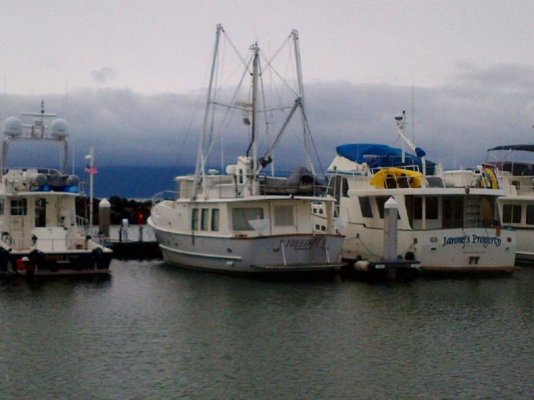GalaxyGirl
Senior Member
Crossing an ocean like the Atlantic is such a major feat of endurance that most people do not do it, even if they may have boats that might be able to be suitably equipped. Personally, I know several people who have done it in sailboats, but nobody who has done it in a power vessel. No matter what route you take, you are looking at 15-20 days of non-stop (24 hour) travel. Somebody, qualified, must be on watch the whole time. Assuming 4 hour rotations (it is very boring mostly) that means you really need an absolute minimum of 3 experienced hands, more is definitely better. Day upon day of rotating watches at sea takes a toll - everybody gets really tired. That is without any mechanical problems or bad weather. Maintenance on the vessel is an ongoing process while underway. Oil changes at a minimum will need to be done 2x during the crossing. Assuming twin engines this means shutting down one at a time. Fuel filters will almost certainly need changing multiple times during the crossing. Who knows what else?? At the end of the voyage what have you really accomplished?? You have put a lot of hours on your vessel and crew to make a journey that you could make in 6 hours by plane at a fraction of the cost. Along the way, you have probably been scared sh1tless several times. Hey you might have even died!!
The voyage itself is primarily one of being out of sight of land or any other living thing, so not much to see along the way. Compared to cruising closer to land or taking 500 mile offshore runs to get somewhere like Bermuda, the Bahamas, the Caribbean, or Canada it is really boring except when it is really scary. Are you really convinced you want to build your whole concept of boating around the need to have a large ocean going vessel for a trip you may make once (hopefully in both directions)??
I will travel the world in a boat...for sure... and when I do, I'll write about my experiences so that those who are too fearful can read what it's like. I am a planner, not a dreamer.
I'm 100% sure that many other things that I have already done in my life most would not even have considered.







